Cannibalism in Blue-tailed damselfly is curiously an almost common occurrence among cases of cannibalism in Odonata; in fact, this species represents to date 20% of the cases of cannibalism documented in Zygoptera! This observation is the twenty-third.
This remains of course a rare phenomenon and I undertook a long research on this subject in which I attempted to list all the cases exhaustively (111 cases). There are several hypotheses to explain this curious phenomenon which goes against the interest of a species and whose causes are undoubtedly multifactorial.
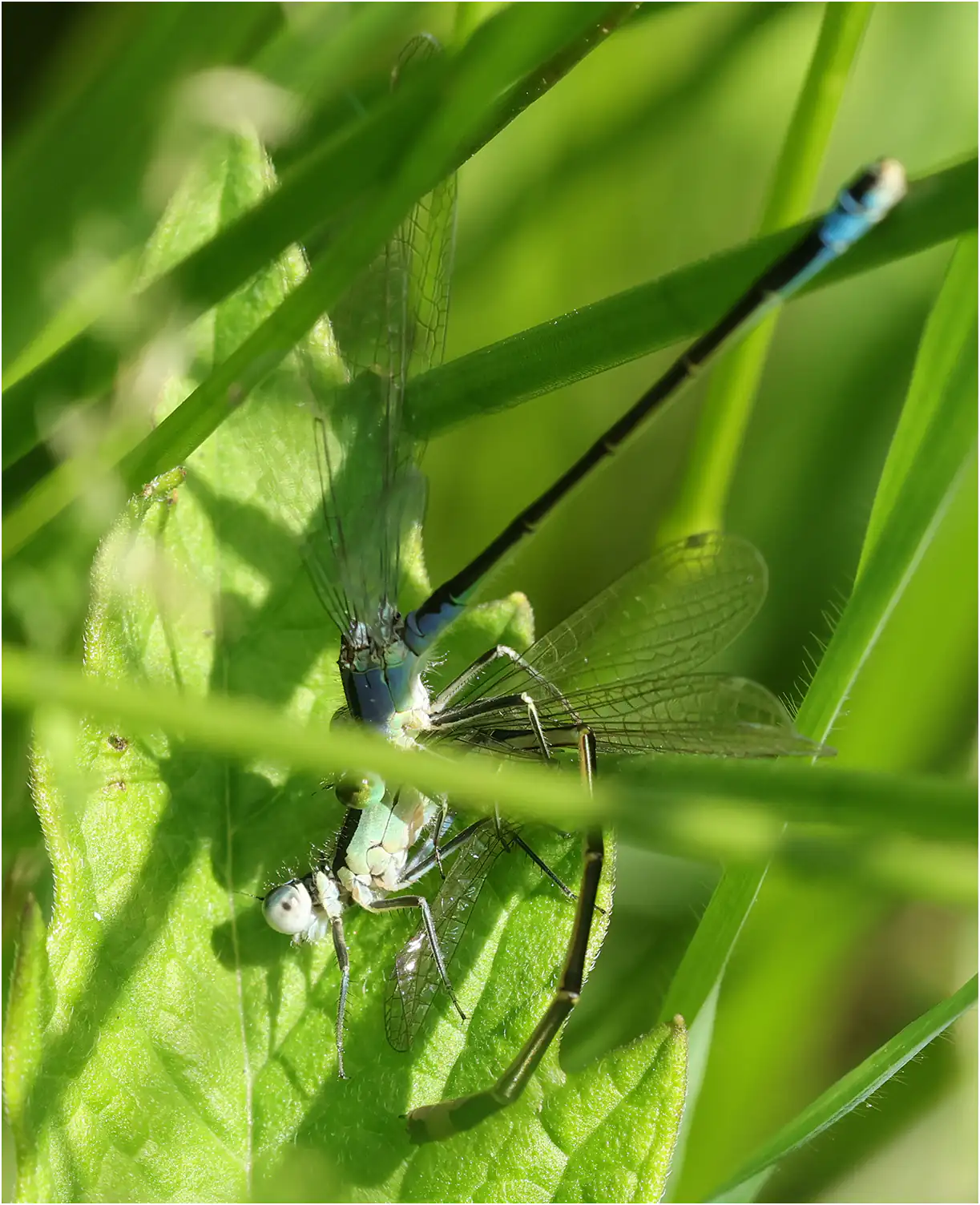
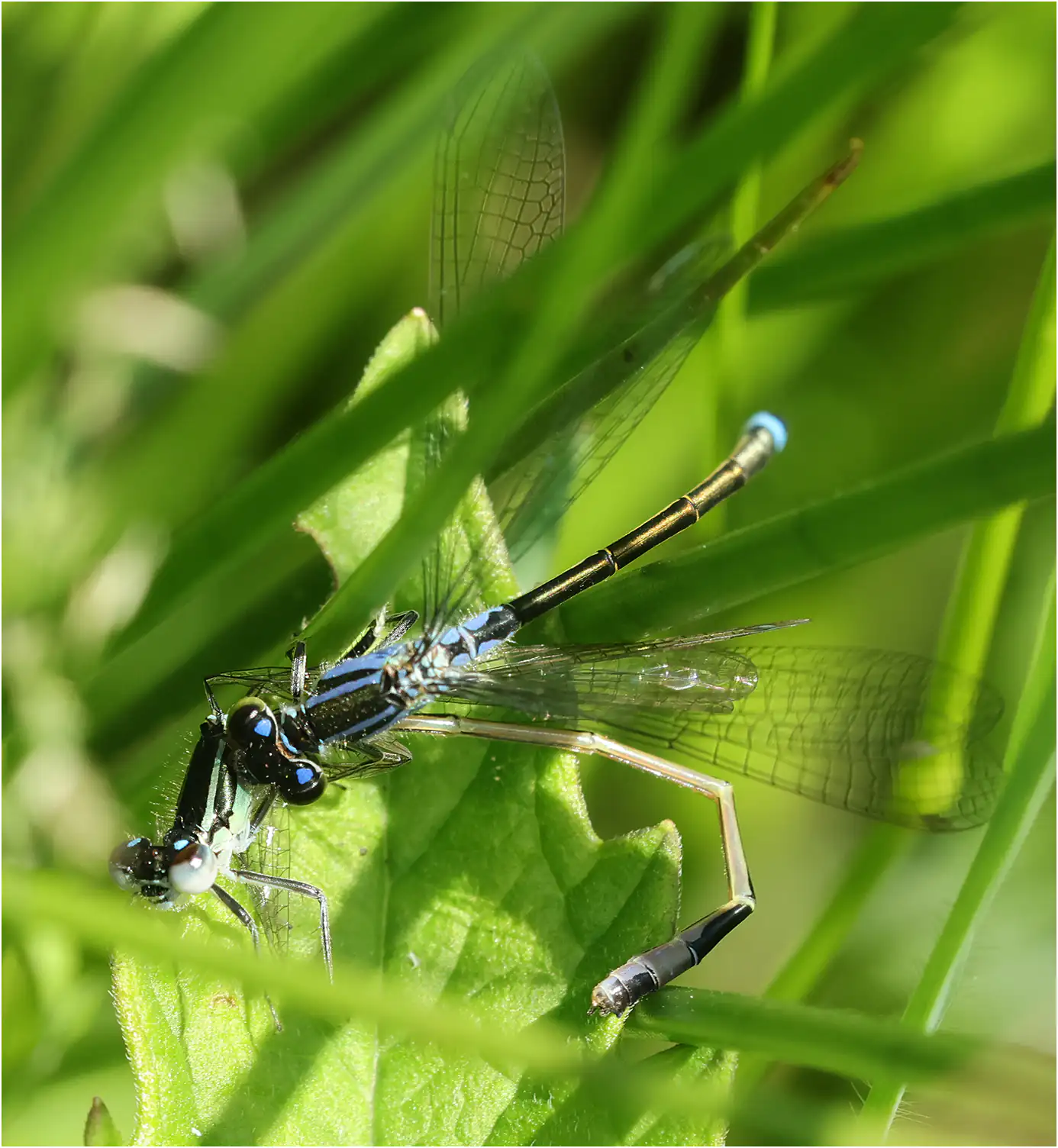
This May 30, 2025, on the banks of the Étang du bois de Ham (Maine-et-Loire), there is no wind, it is 31°C.
Coming to this site, I still have an ulterior motive, because I know that the northeastern bank, gently sloping, is invaded by yellow flag irises and rushes which always shelter a lot of Ischnura elegans… But it is a site that I know well, that I have often explored, without ever having had the chance to take photos of predation.
By advancing in the vegetation, I disturb many very young subjects, young or mature which move away and rest nearby, mainly I. elegans and P. pennipes. 3 Libellula fulva, the only anisoptera, fight over this space by brushing against me.
At exactly 3 p.m., a very dark zygoptera that I am probably disturbing, rises slowly and is immediately grabbed by another, both fall a meter from me, between irises, in the grass.
The first photos above make my heart beat faster, because in my viewfinder (digital…), I have the impression that they are 2 Ischnura elegans; at this moment, I am still not certain that it is not an attempt at mating.
But the color of the aggressor (?) finally eliminates a male that would never have this shade of blue. It is then 3:03:25 p.m.
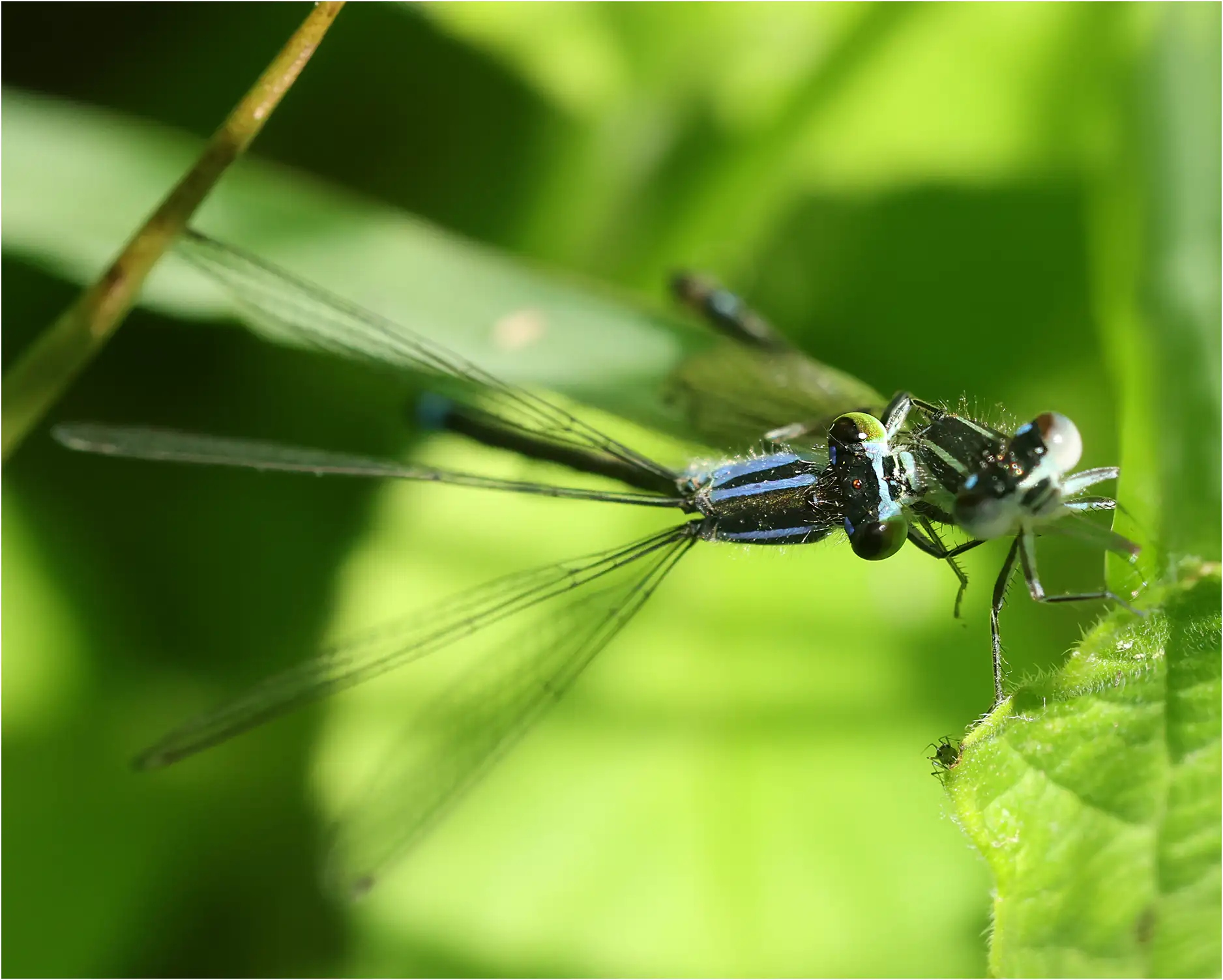
The two subjects struggle, while struggling, they fall and get closer to the ground, I take many photos without interest, always bothered by the vegetation which gets in the way, but which allow me to have the certainty that a young mature female I. elegans attacks a very young male of the same species.
If I doubted to witness a scene of cannibalism, it is because in the vast majority of cases, the predator (in 70% of cases, it is indeed a female) begins its meal with the head and the eyes. This way of attacking the thorax did not seem to me to go in the direction of the numerous cases that I recorded.
But the two photos below remove all doubt: a young female, no longer really an immature of the violacea type, but not yet mature and androchrome, is eating the abdomen of a very young male of the same species.
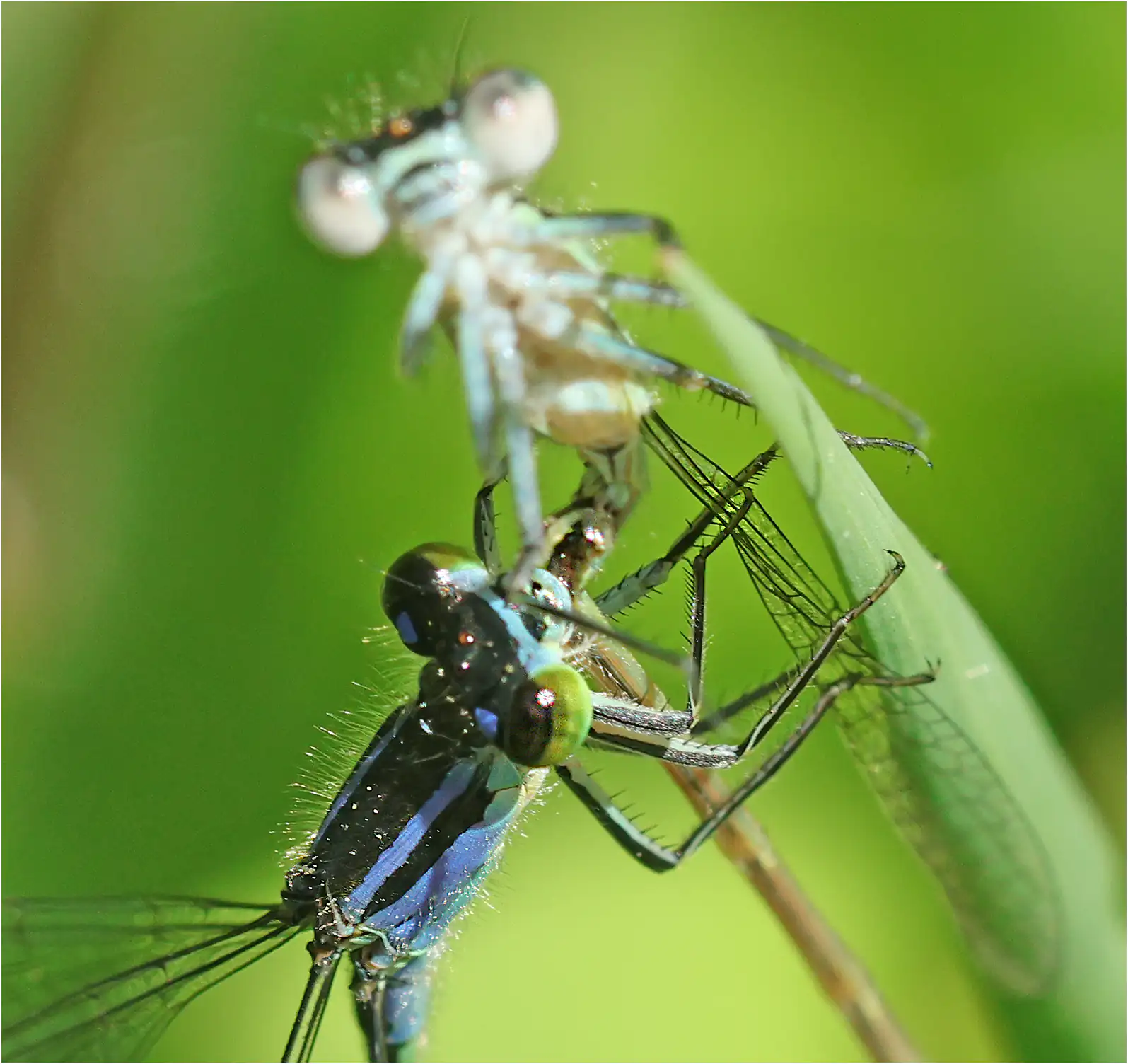
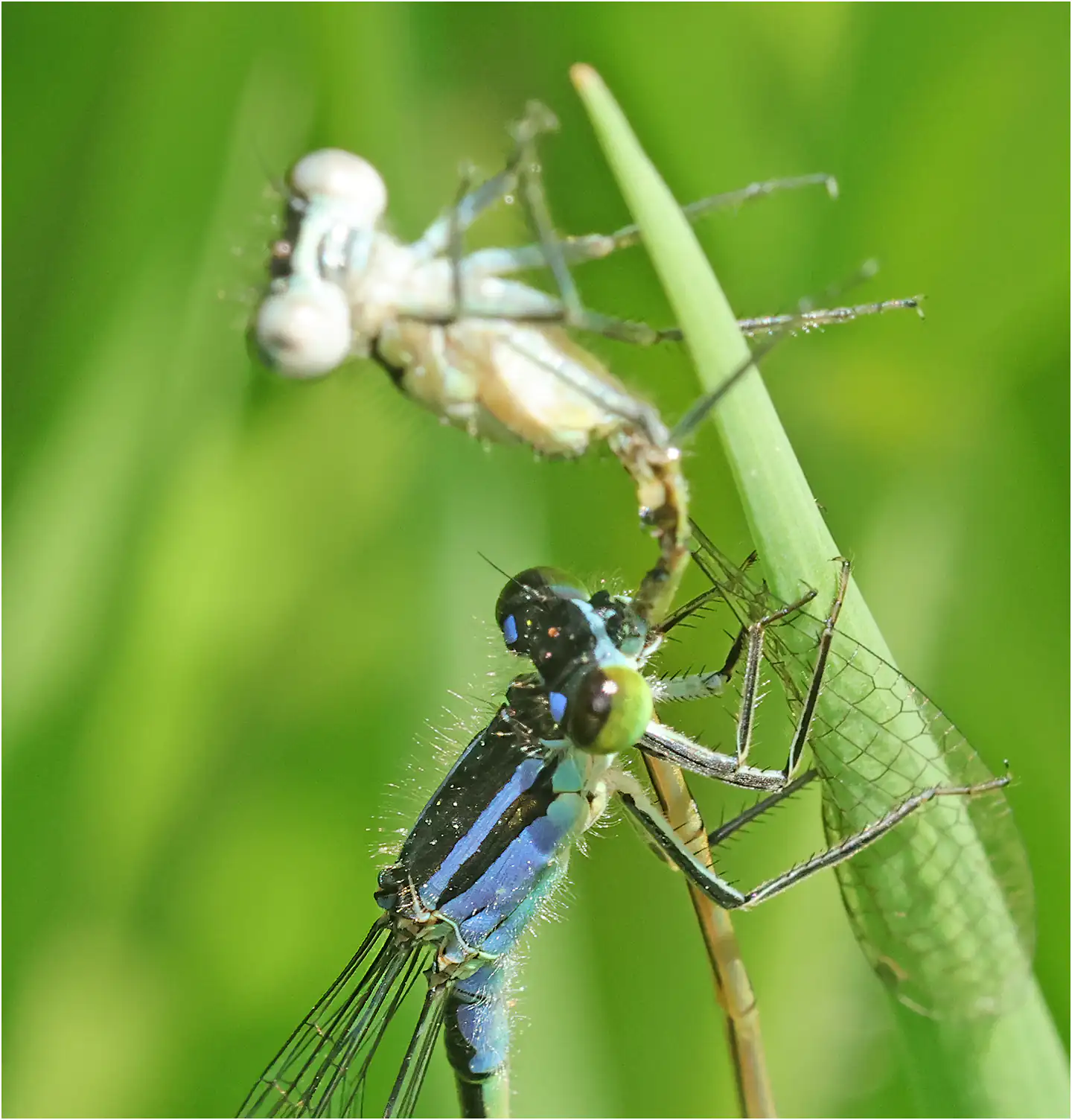
A few seconds later, the abdomen is severed. The predator flies off to rest with the rest of its prey five feet away. I took the precaution of carefully identifying where the victim had remained before moving to take this photo below and a few others. I couldn’t follow the predator any longer, because a few seconds after this photo, it was struck by another Ischnura elegans (male or female?) and flew off with its meal.
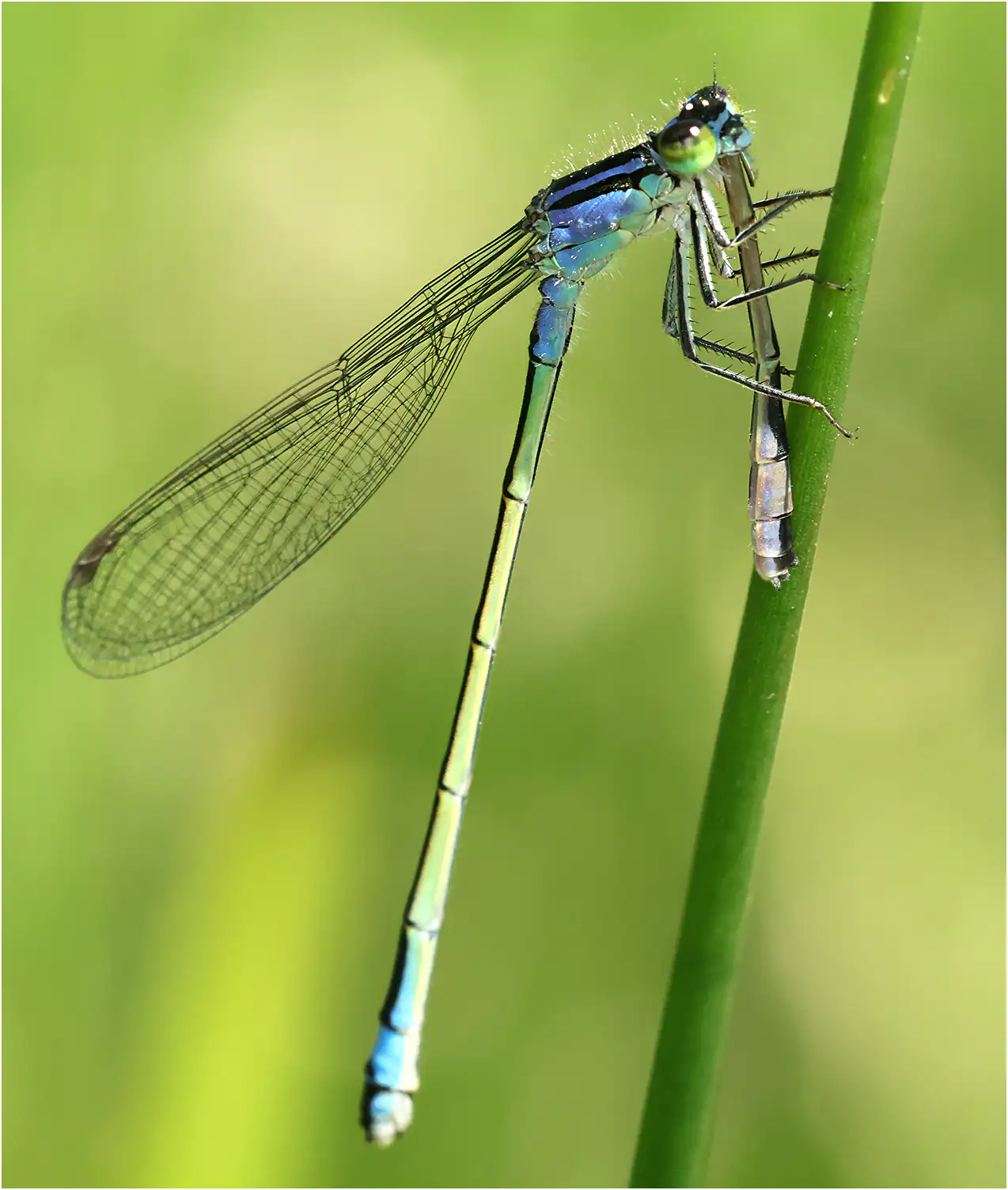
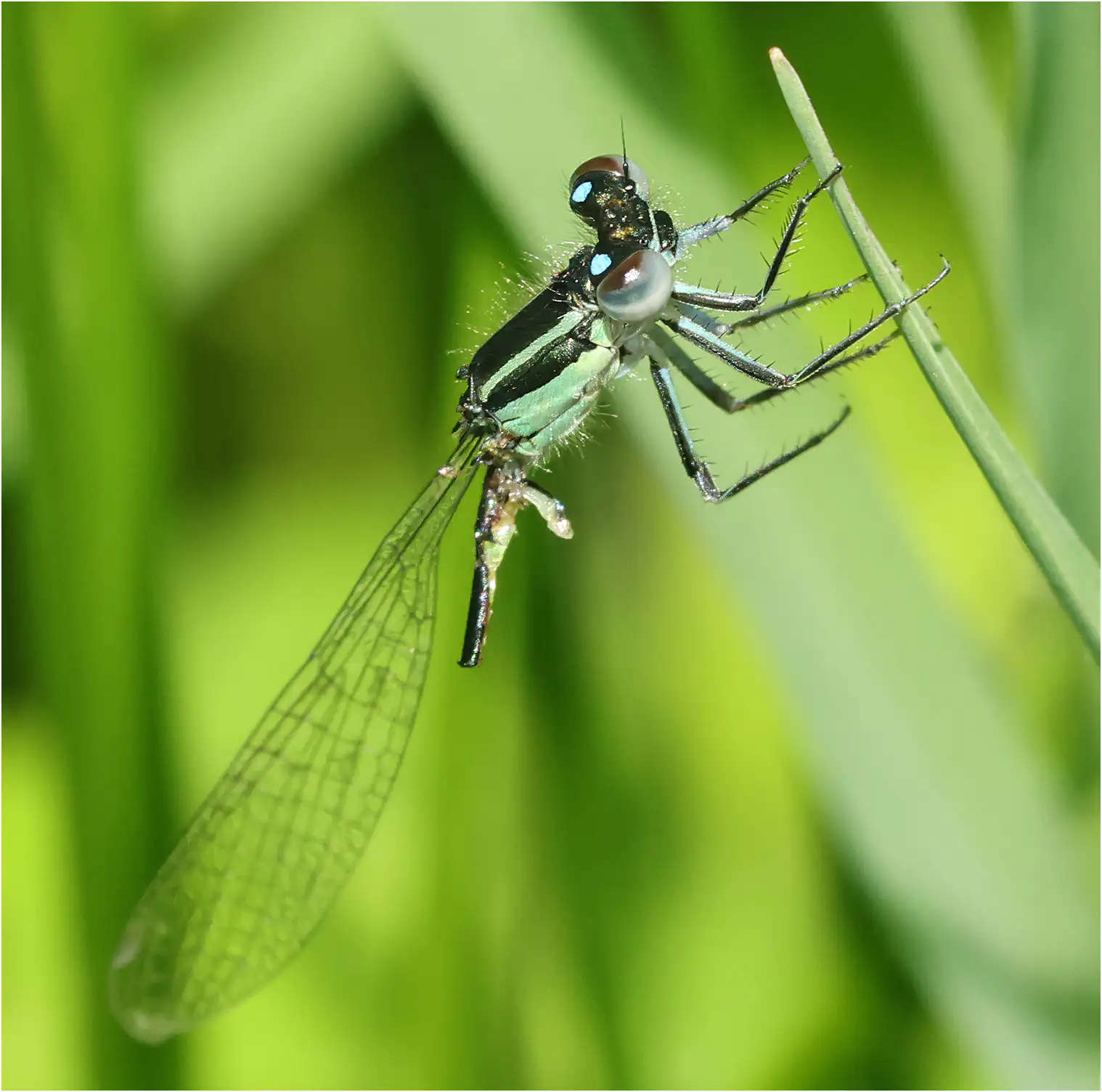
I immediately returned to the victim. Remaining on the same support, it had simply slipped slightly lower.
To take a few photos, I cleared the grass in front of it, and after perhaps a minute, I was surprised to see that it was still very much alive, clumsily moving one and then two legs; then, I was truly amazed to see this small male turn around its support, to place it between him and me and hide behind it, a classic protective behavior of emergents!
Blue -tailed damselfly ♀ x ♂ young, Jallais (F-49), 05/30/2025 – 3:09:01 PM
I very gently picked it up to examine it, intrigued by the time the predator had spent paying attention to the thorax, the side I could see showing no damage. I placed it on a leaf and noticed a gaping wound on the left side of its thorax, where the female had been attacking…
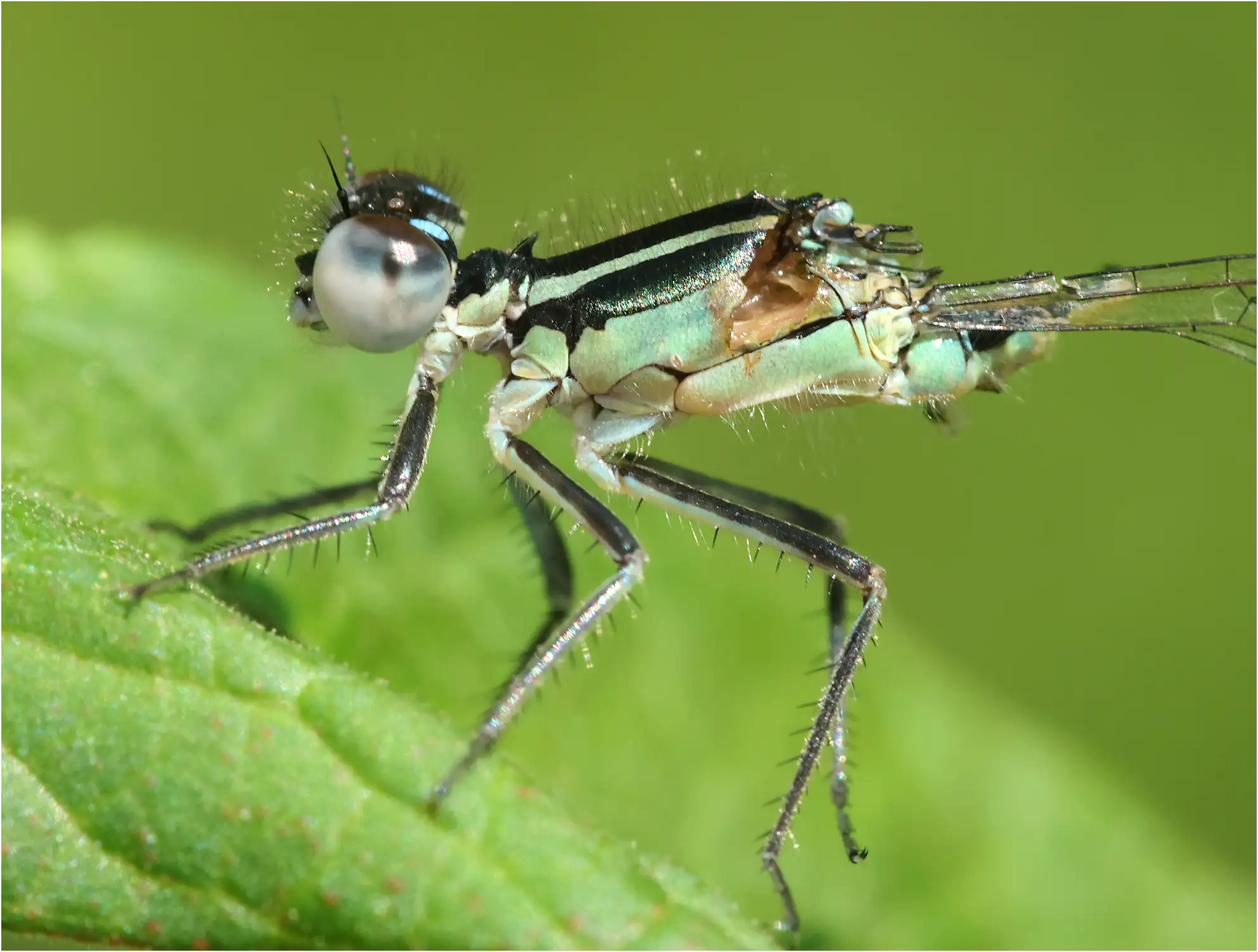
It should be noted that despite having lost its abdomen, the thorax being wide open and missing three, the insect is alive and adopts a classic posture of a perched zygoptera. It is of course doomed, and after some hesitation, I placed it in a sheltered clump of irises, clinging to a leaf. I came back half an hour later, it was still alive, a little higher in the vegetation…
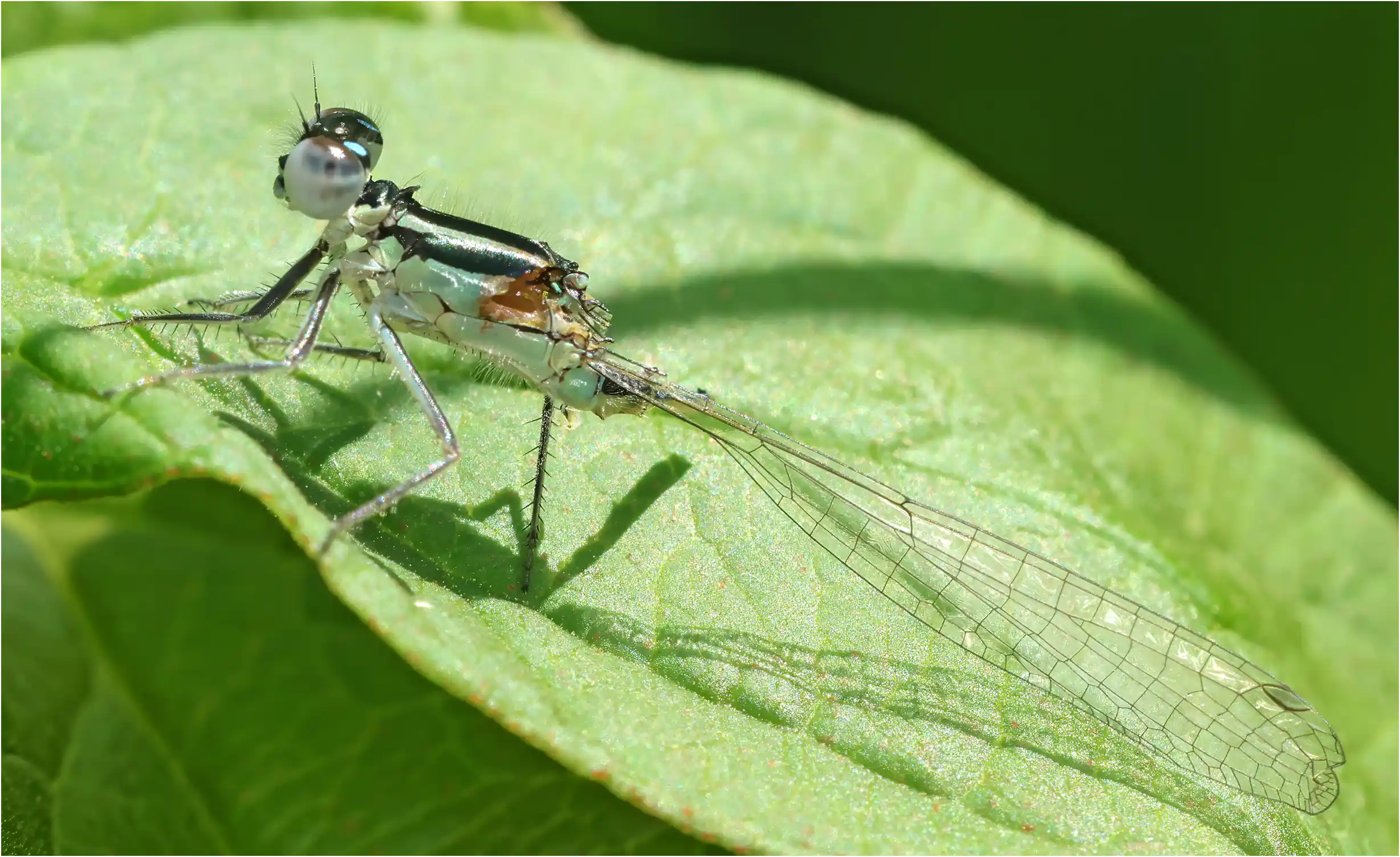
This is the third time I have observed this kind of behavior, after a case of cannibalism between Ischnura senegalensis in Namibia and another in Australia, between Ischnura heterosticta .
It is very likely that cannibalism in Blue-tailed damselfly, as in other Zygoptera, results from a communication problem ; why does the aggressor not understand that he is attacking a member of his own species? We note, for Zygoptera at least, that the victims (males, in most cases) are emerging, immature or very young. They are probably not capable of emitting the warning signals that would make them recognized… This is what Utzeri, 1980 (1) suggests.
A concomitant factor is probably the high density of individuals present on the same site.
More details on the page devoted to Cannibalism among Zygoptera.
1- C. Utzeri, Considerations on cannibalism in Zygoptera, Notul. odonatol., Vol. I, No. 6, pp. 97-112, December I, 1980.